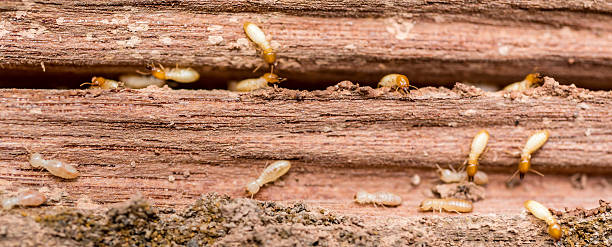Have you ever been excited to slip into your favorite, freshly washed shirt, only to find weird, splotchy stains from fabric softener? We’ve all been there!
In this easy guide, we’re unraveling the mystery of fabric softener stains and showing you how to bid them farewell, ensuring your clothes stay as vibrant as your personality!
Keep reading!
Table of contents
Why do Fabric Softener Stains Occur on Clothes?
Fabric softener stains on clothes can occur for a few reasons, often related to the application and concentration of the softener. Here are some of the major reasons why-
#1. Direct Application:
Issue: Applying fabric softener directly to clothing.
Why: When undiluted fabric softener comes into direct contact with the fabric, it can leave behind visible stains. The concentrated formula may not fully dissolve or rinse out during the wash cycle.
#2. Overuse of Fabric Softener:
Issue: Using too much fabric softener.
Why: Overusing fabric softener doesn’t mean softer clothes; it often leads to residue buildup on fabrics. This residue can result in stains, especially when the softener is not properly diluted or rinsed out.
Check out this related content: What Is In Moth Balls?
#3. Incorrect Dispensing:
Issue: Improper dispensing of fabric softener in the washing machine.
Why: If your washing machine has a designated fabric softener dispenser, adding softener directly to the clothes or the wrong compartment can lead to staining. The machine is designed to release fabric softener at a specific time during the wash cycle.
#4. Application on Dry Clothes:
Issue: Applying fabric softener to already dry clothes.
Why: If fabric softener is sprayed or poured onto dry clothes, it may not be evenly distributed, resulting in visible stains when the fabric softener dries.
You should read: 5 Expert Tools You Need for Demolition
#5. Residue on Washing Machine:
Issue: Residue from previous wash cycles in the washing machine.
Why: If there’s residual fabric softener in the washing machine from previous loads, it can transfer to the next set of clothes, leading to unexpected stains.
Prevention Tip:
To avoid fabric softener stains, follow the recommended usage instructions on the fabric softener bottle. Use the designated dispenser in your washing machine, and consider diluting the softener with water if you’re experiencing staining issues. Additionally, ensure that your washing machine is clean from any lingering fabric softener residues.
Understanding these common causes can help you take preventive measures and keep your clothes stain-free and soft.
Read also: 5 Safety Tips for Cleaning Glass Without Streaks
How to Remove Fabric Softener Stains?
Identify the Stain:
Locate the fabric softener stain on the clothing. The sooner you address it, the better the chances of successful removal.
Rinse with Cold Water:
Rinse the stained area under cold running water. This helps remove any excess fabric softener and prevents it from setting into the fabric.
Pre-Treat with Vinegar:
Mix equal parts water and white vinegar in a bowl.
Dab the stain with the vinegar solution using a clean cloth or sponge.
Allow it to sit for 10-15 minutes. Vinegar helps break down the fabric softener residue.
Use a Stain Remover:
Apply a small amount of a stain remover or liquid laundry detergent directly to the stain.
Gently rub the fabric together or use a soft brush to work the product into the stain.
Wash as Usual:
Wash the garment as usual, following the care instructions on the clothing label.
Use cold water, and avoid using fabric softener in this wash to prevent further staining.
Check Before Drying:
Before putting the garment in the dryer, check to ensure that the stain is fully removed.
If any trace of the stain remains, repeat the steps above.
Air Dry if Necessary:
If the stain persists, avoid using the dryer. Instead, air-dry the garment. Heat from the dryer can set stains, making them more difficult to remove.
Additional Tips:
- Avoid Heat: High temperatures can set fabric softener stains. Use cold water for both rinsing and washing.
- Test in an Inconspicuous Area: Before applying vinegar or stain remover, test it in an inconspicuous area to ensure it doesn’t cause damage to the fabric.
- Always check the care label on your clothing before attempting any stain removal. Some fabrics may be more delicate and may require special care.
Check out this related content: How to Measure Square Footage | Learn this now
Tips for Preventing Fabric Softener Stains on Clothes
Preventing fabric softener stains on clothes is possible with a few simple tips. Here’s how to keep your garments free from those pesky marks:
Proper Dispensing:
Follow the manufacturer’s instructions for your washing machine and fabric softener. Use the designated compartment in your washing machine for fabric softener, if available.
Dilute Fabric Softener:
If you’re experiencing staining issues, consider diluting the fabric softener with water before adding it to the washing machine. This helps ensure even distribution and reduces the likelihood of residue.
Use the Right Amount:
Follow the recommended dosage of fabric softener indicated on the product’s label. More is not always better and can lead to residue buildup.
Add Fabric Softener at the Right Time:
If your washing machine has a fabric softener dispenser, add the softener during the rinse cycle. This ensures proper dilution and distribution.
Consider Dryer Sheets:
Opt for dryer sheets as an alternative to liquid fabric softener. They can provide the same softening benefits without the risk of stains.
Check for Residue:
Regularly clean your washing machine to remove any fabric softener residue from previous wash cycles. This helps prevent the transfer of residue onto your clothes.
Pre-treat Stains Before Drying:
If you notice a fabric softener stain before drying, treat it immediately following the recommended stain removal steps. Avoid drying the garment until the stain is fully addressed.
Avoid Overloading the Machine:
Overloading the washing machine can result in uneven distribution of fabric softener. Ensure there’s enough space for clothes to move freely during the wash.
Separate Delicates:
Wash delicate fabrics or those prone to staining separately from items that require fabric softener. This helps prevent accidental contact with fabric softener during the wash.
You should read: Work-Study in UK: 5 Types of Visa to Apply For in 2023
Can fabric softeners ruin clothes?
While fabric softeners are widely used to add a pleasant scent and softness to laundry, they can potentially cause issues and, in some cases, contribute to wear and tear on clothes.
While fabric softeners can enhance the feel and scent of your laundry, it’s essential to be mindful of their potential impact on different types of fabrics and clothing. If you notice any adverse effects, adjusting your laundry routine or using alternatives may be beneficial.
Also see this: Fully-funded Commonwealth Masters Scholarships in the UK 2023 [Updated]
Conclusion
With these easy tips and tricks, you can keep your clothes looking fresh, clean, and stain-free. Because life is too short to let laundry mishaps dull your wardrobe shine!
Frequently Asked Questions
Fabric softener stains often occur when the softener is directly applied to the fabric or when too much softener is used. Residue can be left behind, leading to those pesky stains.
Yes, you can still tackle dried fabric softener stains. Try rewashing the garment, pretreating the stain, and avoiding the dryer until the stain is fully gone.
Less is more! Follow the recommended dosage on the fabric softener bottle, and consider diluting it with water if you’re prone to stains.
Treat colored clothes delicately. Blot the stain with a mixture of water and vinegar or use a color-safe stain remover before washing.
Absolutely! To prevent stains, add fabric softener to the designated dispenser in your washing machine. Also, consider using dryer sheets instead of liquid softener.
References
- site.extension.uga.edu– How to Remove Fabric Softener Stains
- cleanipedia.com– How to Remove Fabric Softener Stains from clothes
- thespruce.com– How to Remove Fabric Softener Stains





